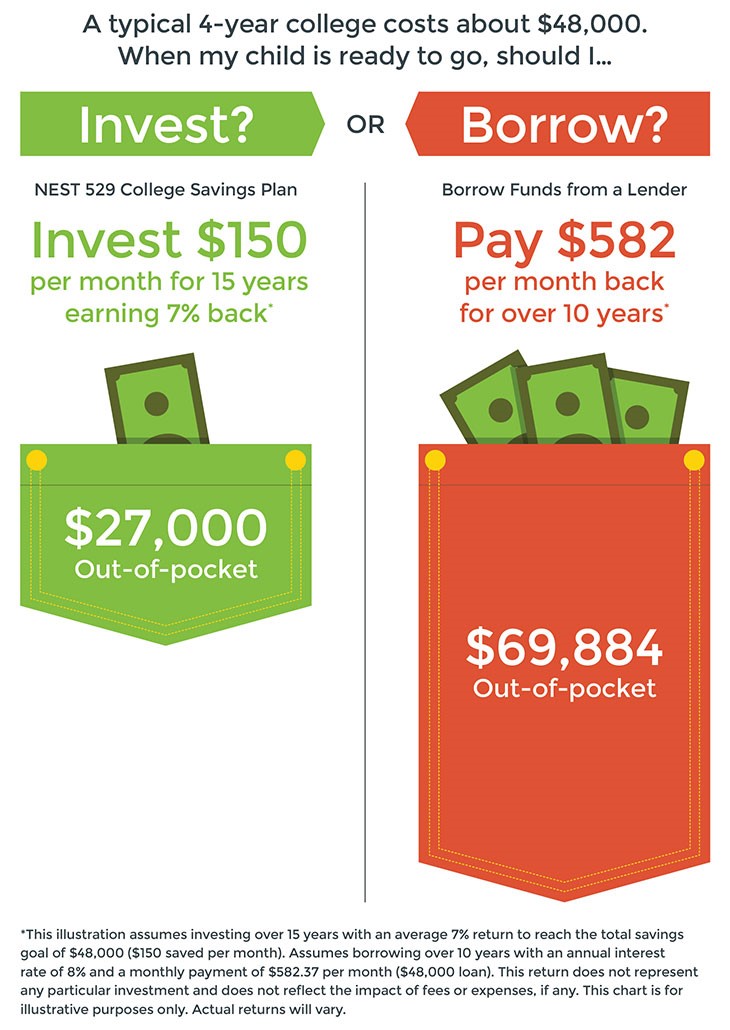As a financial advisor, I’ve encouraged clients for years to consider college savings as part of their financial planning considerations. However, with a son and daughter now both in college, firsthand experience makes it even more real – it has reinforced how important saving for college can be for families. Here are a few tips to consider:
1. Start early. My parents had the expectation I attend college; however, as I was growing up, there wasn’t much focus put into how it would be funded. I was able to get my 4-year degree, but paying for it was stressful at times. I’m now a parent of four, and just like it was for me, college is an expectation. Whether your philosophy is to pay for all their college expenses, or none, the more you (or they) save for college now, the less they have to worry about later. Research show that students with college savings accounts are three to four times as likely to graduate from college than those without.* Talk to your kids about your saving philosophy and help them begin to understand how savings can add up over time.
2. Understand the basic cost of higher education. According to the University of Nebraska Admissions department, the yearly cost for tuition, room, and meals is $28,594 per year (in-state). This is the average cost today. If your child has ten more years before they enter college, consider the impact of inflation and what the future cost will be. Also, discuss with them how their choice of college can impact their situation. A basic understanding of today’s cost will help you both make savings decisions. As your child enters high school and starts to make decisions on college choice and major, discuss with them the cost advantages of each and how this might impact them. Also, help them understand that it’s less expensive to save than to borrow. The chart below illustrates how wise it is to save on the front end (Source: Nest529direct).

3. Understand how scholarships impact 529 savings. For any qualifying expenses in excess of the scholarship amount (i.e., tuition, room, board, books, etc.), withdrawals from the 529 are penalty and tax-free. In the event you have saved in excess of scholarships received, you can withdraw the amount of the scholarship without having to pay a penalty but you will have to pay taxes on earnings.
In Fidelity Investments’ 2019 College Savings: Lessons Learned Study, top advice offered to those just graduating college for college-bound students was this:
- 47% said they would research more grants and scholarships to help offset costs
- 37% said to save as early as possible for college
- 34% said to take on as little debt as possible
- 34% said to research and understand financial aid and the implications of taking on student loans
I don’t know about you, but my kids usually don’t seem to think I’m “in-tune” with the most recent trends. This study would suggest, I’m “on-trend” when it comes to my advice on saving for college!
If you need help starting a college savings plan, reach out to us. We will work together to find the best plan tailored to fit your needs
*EdSouce.org
The opinions voiced in this material are for general information only and are not intended to provide specific advice or recommendations for any individual.





